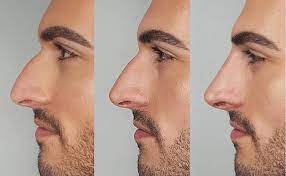Liquid Rhinoplasty: Enhancing Your Nose Non-Surgically
Introduction
When it comes to enhancing facial features, the nose often takes center stage. For those who desire a more balanced and symmetrical facial appearance but are hesitant to undergo surgery, liquid rhinoplasty provides an attractive alternative. This non-surgical procedure has gained popularity in recent years, offering individuals the opportunity to reshape their nose without the need for invasive surgery or lengthy recovery times. In this article, we will delve into the details of Liquid Rhinoplasty in Saudi Arabia, exploring its benefits, procedure, and potential risks, to help you make an informed decision about whether it is the right option for you.
Understanding Liquid Rhinoplasty
What is Liquid Rhinoplasty?
Liquid rhinoplasty, also known as a non-surgical nose job or non-surgical rhinoplasty, is a cosmetic procedure that involves using injectable dermal fillers to reshape and enhance the nose. It is a minimally invasive alternative to traditional surgical rhinoplasty, which involves surgical incisions and the alteration of bone and cartilage.
How Does It Differ from Traditional Rhinoplasty?
While traditional rhinoplasty involves surgical intervention, liquid rhinoplasty utilizes dermal fillers to enhance the appearance of the nose. The fillers are strategically injected into specific areas to create a more balanced and symmetrical look. It is important to note that liquid rhinoplasty is primarily a cosmetic procedure and may not be suitable for major structural changes or corrections.
The Role of Dermal Fillers
Dermal fillers used in liquid rhinoplasty are typically made of hyaluronic acid, a substance naturally found in the body. Hyaluronic acid fillers provide volume and structure to the treated areas, allowing for precise sculpting of the nose. The results are immediate and can last several months to a year, depending on the type of filler used and individual factors.
The Liquid Rhinoplasty Procedure
Consultation and Assessment
Before undergoing liquid rhinoplasty, it is crucial to have a consultation with a qualified and experienced practitioner. During this consultation, your practitioner will assess your nose, discuss your desired outcomes, and evaluate your suitability for the procedure. They will also explain the potential risks and limitations of liquid rhinoplasty, ensuring that you have realistic expectations.
Preparation and Anesthesia
Liquid rhinoplasty is a relatively quick procedure that can often be performed in an office setting. Before the procedure begins, the practitioner will clean and sterilize the treatment area. In some cases, a topical anesthetic may be applied to minimize discomfort during the injections. However, most dermal fillers used in liquid rhinoplasty contain lidocaine, a local anesthetic, which helps to numb the area and enhance your comfort during the procedure.
Injection Technique
Once the anesthesia has taken effect, the practitioner will carefully inject the dermal fillers into the predetermined areas of your nose. The injection technique will vary depending on your specific concerns and desired results. The practitioner will strategically place the fillers to address issues such as a dorsal hump, nasal asymmetry, or a drooping nasal tip. They will assess the progress as they go, ensuring that the changes are gradual and natural-looking



Comments
Post a Comment